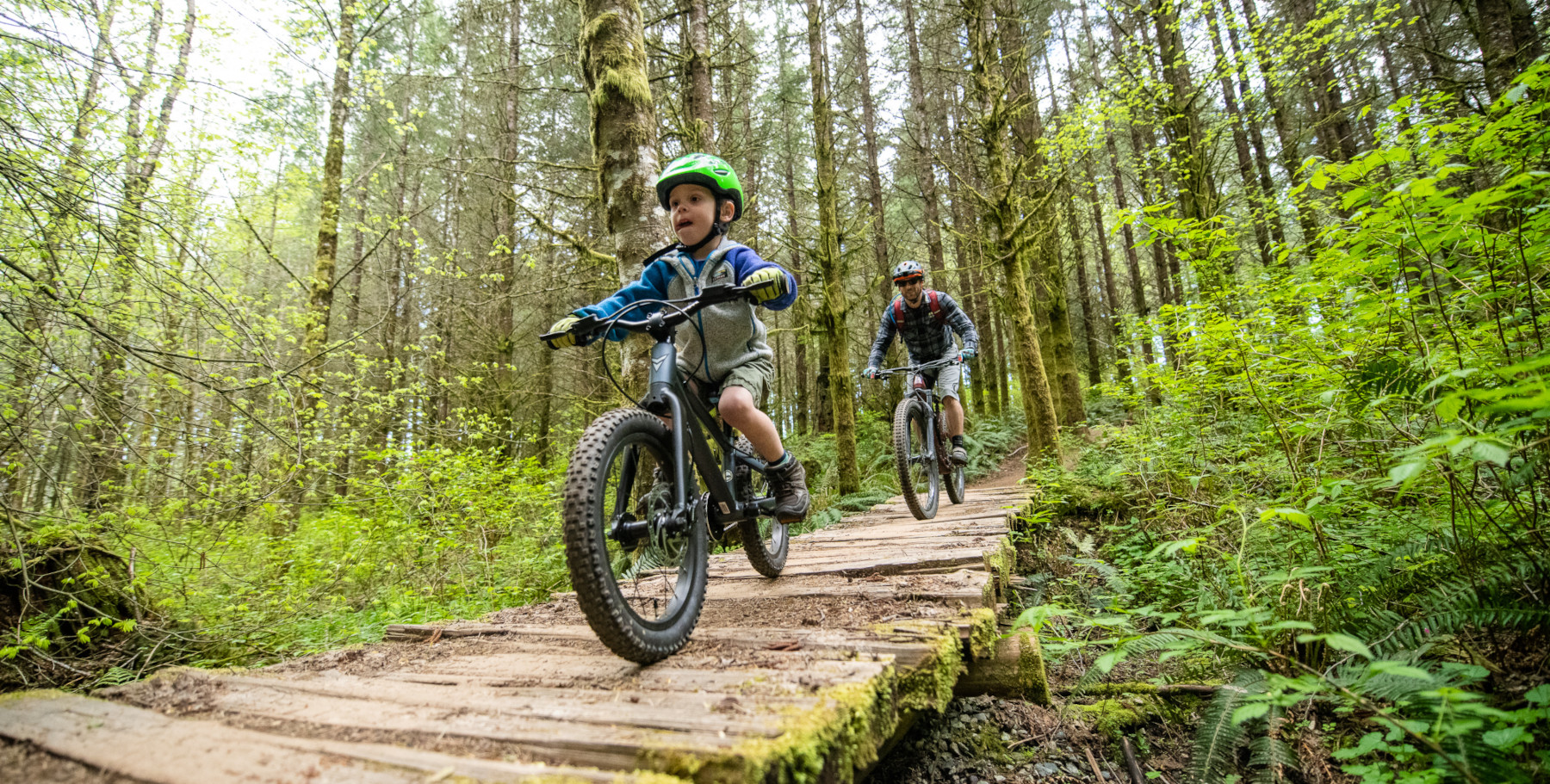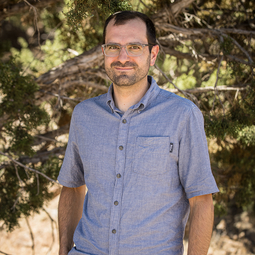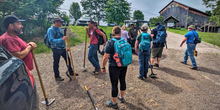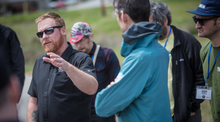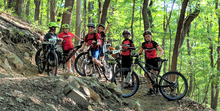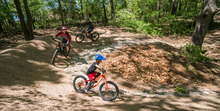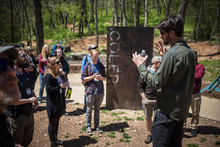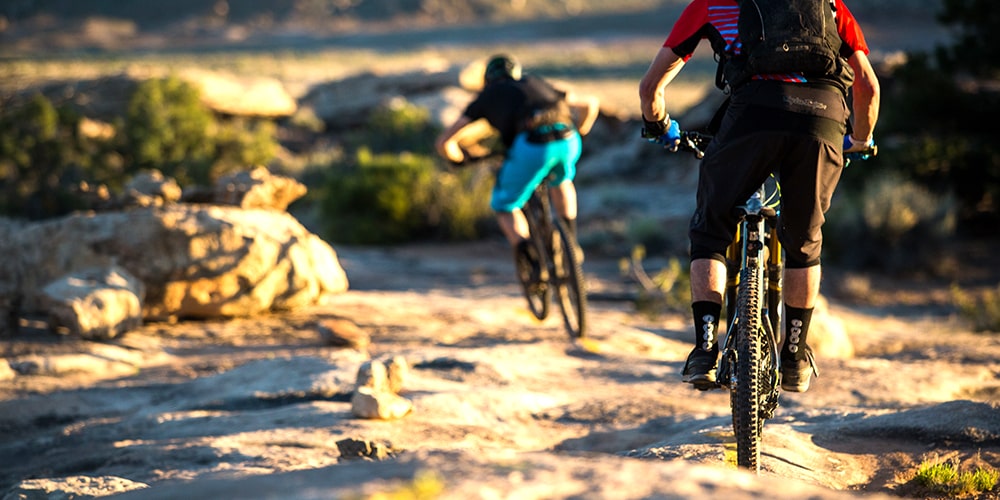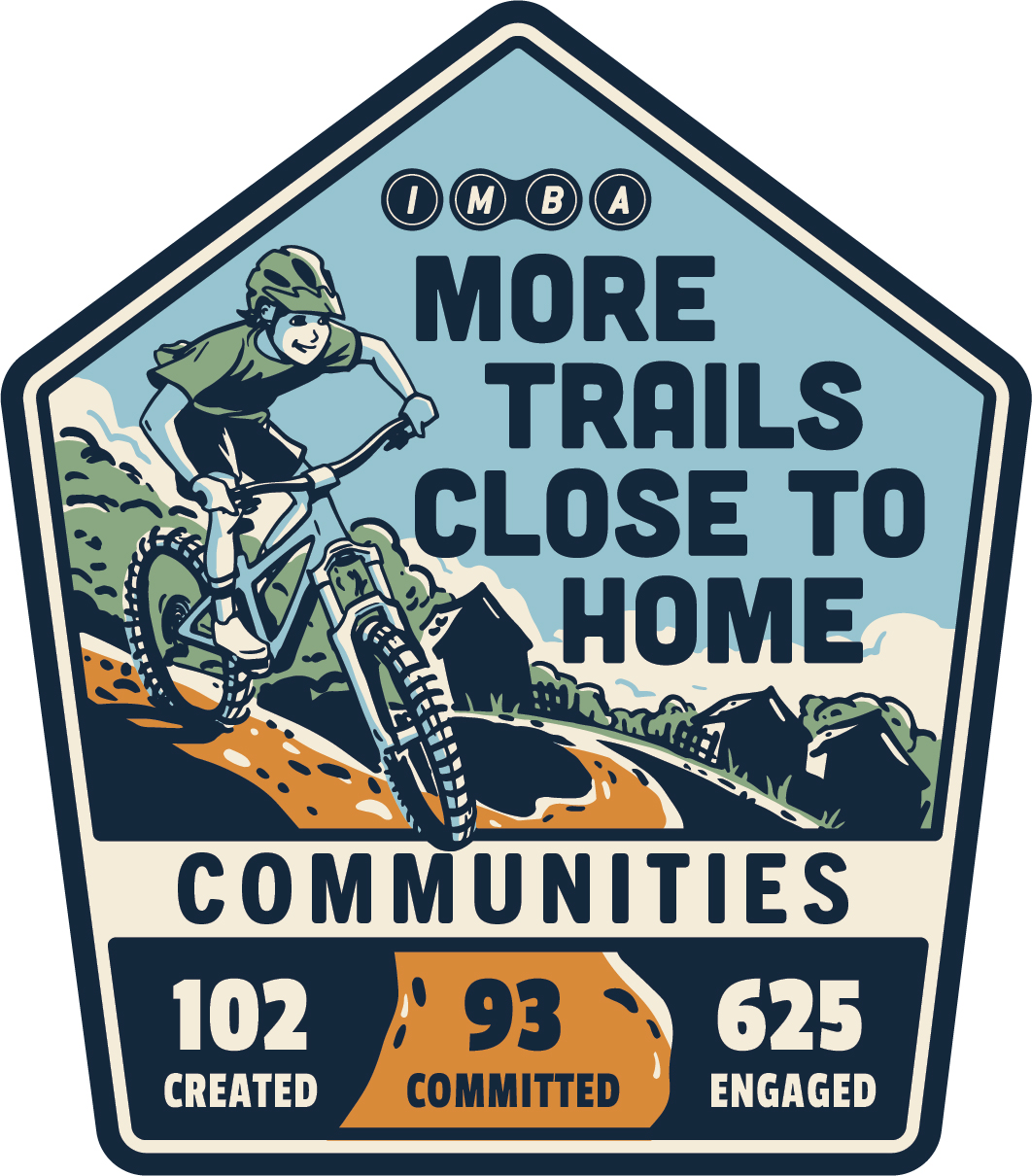Southern Shore Trail Care
Part two of a conversation between Amanda Carey, NICA President, and Kent McNeill, IMBA CEO. Look out for part three, coming soon.
What’s the impact of trails for all abilities on individuals and communities?
Amanda Carey: If we start trail design by considering how many types of users we can include on a trail or trail network, the better it's going to be for the entire community. It really is looking at inclusivity and trail design, beyond needing more green and blue trails, to designing for people with disabilities or folks that don't ever want to ride a bike – maybe they want to go birding, hiking or an easy place to watch their kids ride. It's thinking about the entire community before you design a trail, and considering how many people you can include. It's not that much of a change to design trail systems that actually include those folks so the trails have a huge impact.
It's not just related to kids. We've had a profound impact on including more adults. Beginner trails aren't only for kids, beginner trails include more people in general. A lot of our NICA coaches are at the beginner level as well. When we think about the impact that NICA has had trying to get more kids on bikes, that's led to more adults as well.
Kent McNeill: If you think back about the history of MTB, we built a lot of blue and black trails because that’s what we wanted to ride. By the time we were willing to put our own sweat equity in we were pretty good riders so in most communities the blue and black single track got built. What you're speaking to, now as we're bringing trails close to home into more population dense areas, the on-ramps into the activity just aren't there in a lot of communities.
MTB itself has progressed to all these different types of riding experiences and so when you look at it from a community perspective, whether it's adaptive, hiking or bird watching a lot of folks have challenged us, “Why do you even care about that? You're the International Mountain Bicycling Association.” If you can take the natural surface user groups and get them to envision a system where they all can have the experience they want, and there are on-ramps into the sport and it can serve NICA programming then it unlocks a tremendous amount of investment in the community that we couldn't otherwise get. It's not an ‘either-or’, it's the ‘and’ that will get you more of that skill progression infrastructure in the long run if you start engaging the entire community. Workforce attraction and retention of engaging trail systems, community, mental and physical health, economic impact all leads to investment in this infrastructure as a recreation amenity in communities including urban settings.
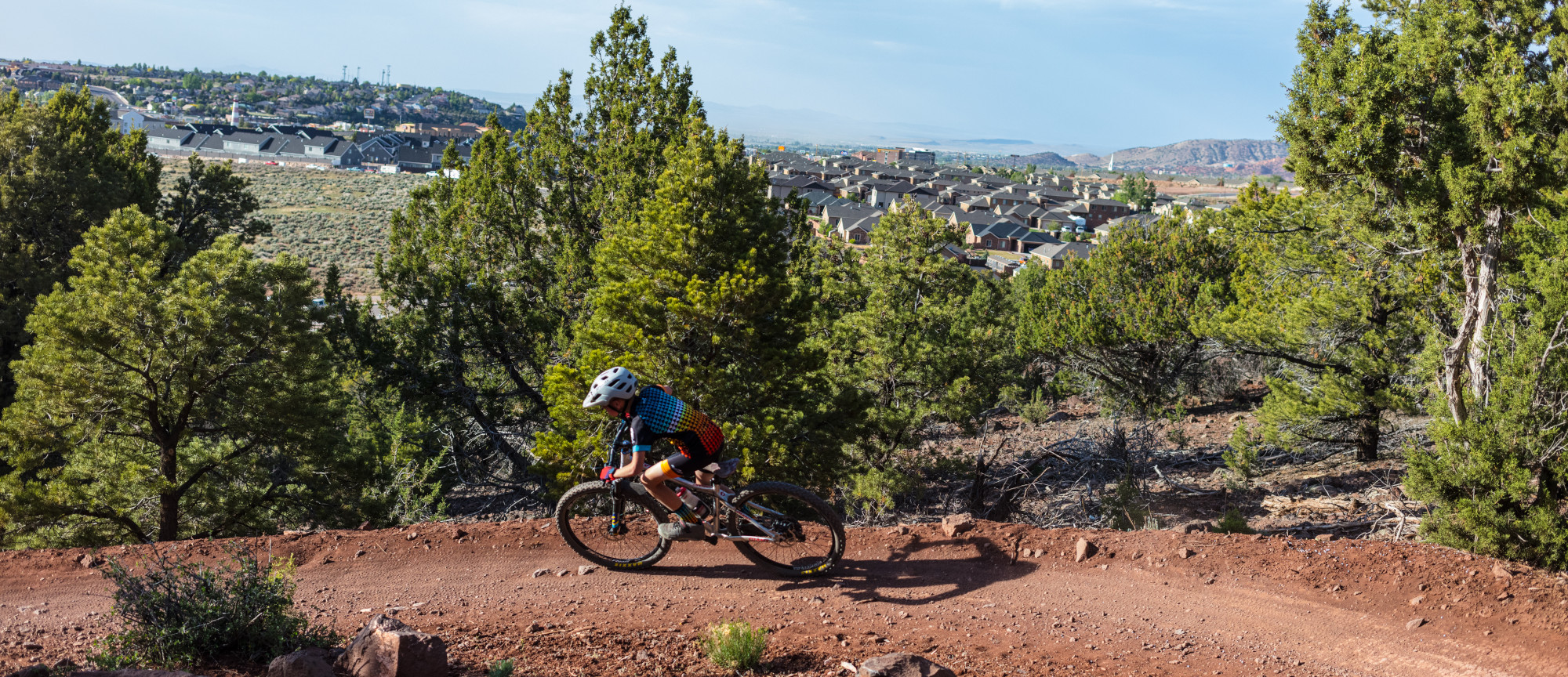
AC: NICA is so proud: we're going to have almost 30,000 kids in NICA programs riding trails this year. User conflict is by far going to be the one of the biggest barriers to growing the sport and trails. NICA keeps ride groups small – up to eight people. We teach riders to yield, be polite and understand the impact that we have on a trail system when we go as a team. By advocating for separated use or additional single-use or directional trails, we know that we have to be a user group that wants to help solve problems. The way we get along with each other out in the woods is a very important part of NICA education. I can always tell when I pass a NICA kid on the trail because they are typically the ones that are going to smile and say thank you. Trail etiquette is a really important part of future access.
KM: Mountain biking, unlike a lot of other youth sports, is more than a sport. It's a recreation and it's using shared infrastructure. Ball sports are all set up and managed through recreation management. But when you bring a bunch of kids into a trail system, that could potentially push the community out of their asset and create conflict. Especially within urban settings like Corner Canyon in Draper City, planning is so important, where separated use zones etc. are really important to allow the community to continue to enjoy their asset after work and allow a place for programming and sports to happen at the same time. A lot of times people don’t think about the challenges from a recreation management perspective but that’s definitely one to consider.
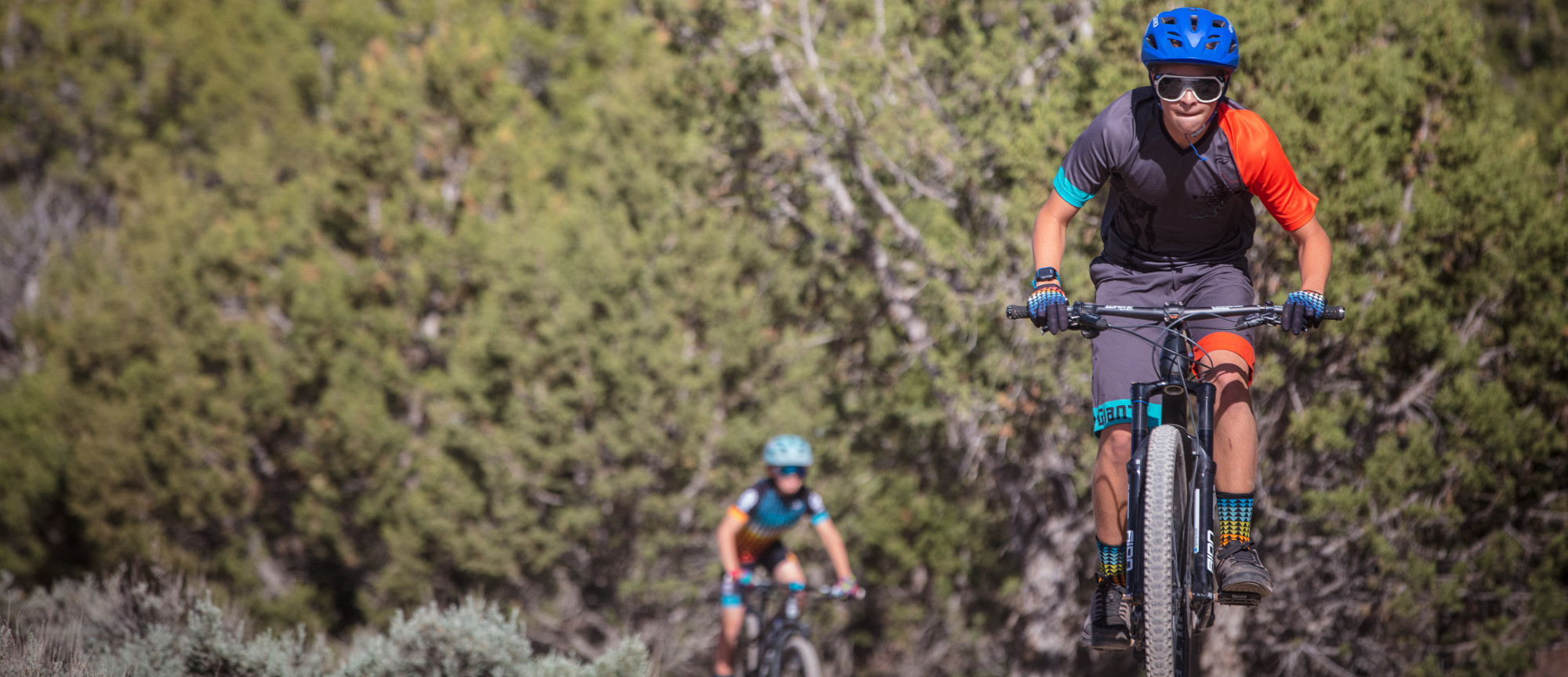
What are some examples of model communities? How did they get there? Would you highlight any specific Trail Accelerator Grant or Dig In success stories?
KM: Not all communities follow the same path, but what they have in common is they generally have a local advocacy group, funders and land managers that have aligned around a vision of how to bring these systems to life. They plan out experiences across their community within the open space and parks. A couple that jump out – they’re great examples so we have IMBA Foundations workshops in these places but they're distinctly different models:
Cedar City Utah – The Bureau of Land Management (BLM), Trail Alliance of Southern Utah, an IMBA Local org, and the NICA group ended up incorporating a practice loop into that system that the kids can ride right to. That's a model where the land manager, the advocates and the NICA team, and a really good collaboration of professional and volunteer efforts came together to build that system using a mix of BLM, county and state funding. All of those stakeholders understood the value of those types of trail systems and skill progression, built from day one starting with green and blue into black trails. It's a really great example of a federal land manager along with those other stakeholders making it happen. Cedar City is probably the best example of starting early on thinking through how to also serve youth programming and NICA.
Northwest Arkansas and Bentonville – Another completely different model that got driven by The Waltons for workforce attraction and retention and then they partnered with their parks department and Visit Bentonville and others to start to build out and using private funding, to be able to bring about that diverse style and skill progression of infrastructure and pump tracks and skills areas as well.
We've hit on the importance of planning. One of the things that we've noticed is there's generally funding for building the infrastructure, but there's not a lot of funding for planning. Feasibility studies or master planning needs to happen before creating skill diverse systems, the NICA event overlay, NICA practice zones and other elements in a system. IMBA developed the Trail Accelerator Grant (TAG) to help provide needed funding, because professional plans unlock community momentum and assess community needs.
TAG unlocks a tremendous amount of community momentum first, and then funding for construction. IMBA has given away a little over a half million dollars via TAG, which has already unlocked over $12 million in construction funding.
Dig In is a program where we help crowdsource funding for construction or maintenance of trails with our local trail champions. A recent Dig In project took place at Wiggins Community Center in Anniston, AL. They wanted to have trails right from their center that they could get the kids out on and so their recent Dig In Project is helping provide that infrastructure for diverse participation growth and equity and access.
AC: The only thing I would add to that is that if you are planning the community trail system and you're not thinking of NICA, please do! I can almost guarantee that if you don't have a NICA team in your community right now and that you also don't have a good trail system, that's most likely the reason. If you build it they will absolutely come. If you invest in that community-minded trail system that youth programming will absolutely take off from there
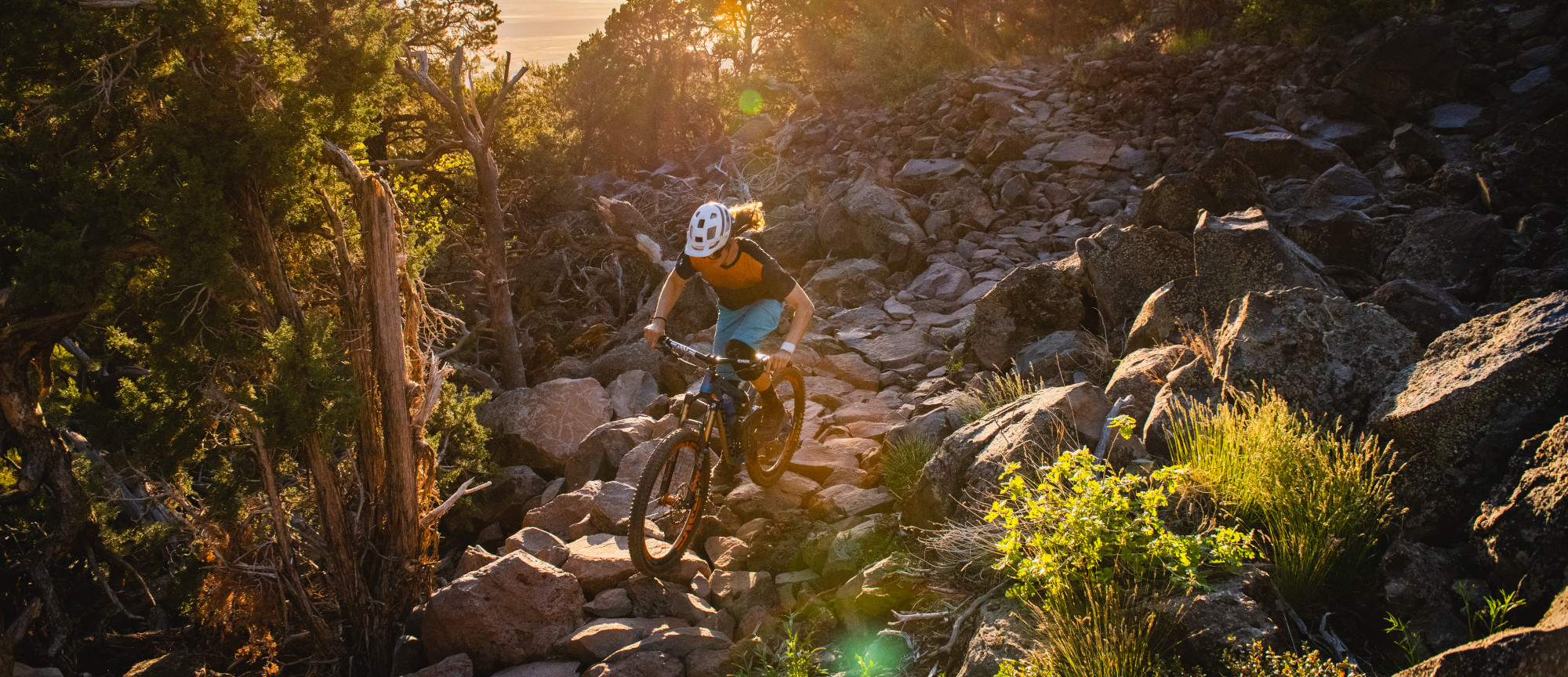
How do trail Champions factor into getting to that ideal facility? What are some ways to identify trail champions?
KM: Trail Champions are those people driving community change and helping build this infrastructure. We've learned over the course of almost 35 years that community change happens the fastest when it's done from within by people who live and work in those communities. IMBA has really switched how we help those trail Champions, by giving them the tools and resources they need to bring a trail project and community from idea to completion. Trail Champions are passionate about the value trails are going to bring to their community. They may be mountain bikers, but they may not be.
We've seen the most success when it's a civic leader; they're professional, they have resources, and they’re able to be at all the meetings and so on. Having paid staff really accelerates this in a community and if community foundations, parks foundations and others see the value and fund those positions to really accelerate the work of Trail Champions.
That's what we're in the business of partnering with and providing tools and resources and coaching is for those individuals and communities that are doing the work and volunteering their time until they can get into paid capacity positions. It's such an important role. Without that, communities really struggle to unlock funding and access. We're at the golden age of mountain biking where the values are more broadly understood and there's a lot of people that want to make it happen and so really resourcing these folks and communities is how we see that continuing to accelerate progress.
Contact Amanda or Kent if you have any questions about what NICA and IMBA can do for your community. Read part one if you haven't already, and look out for the third part of the discussion, coming soon!
